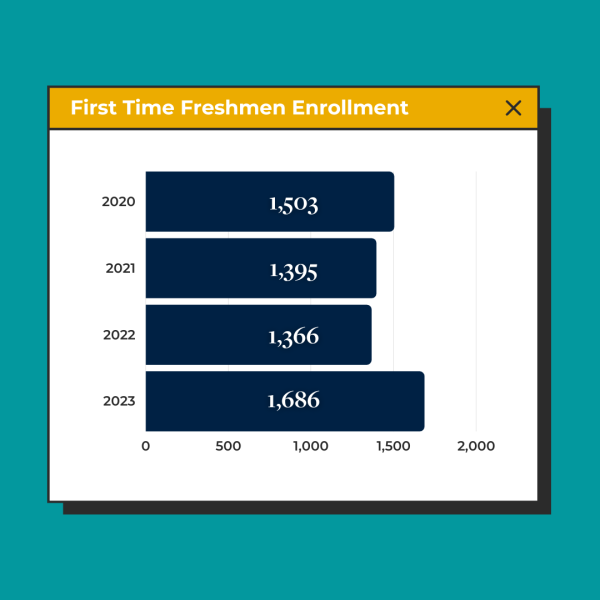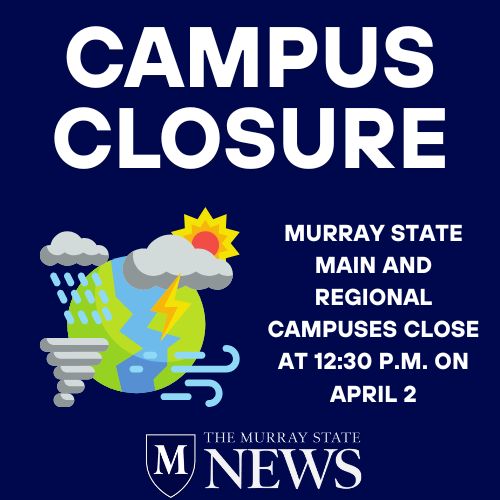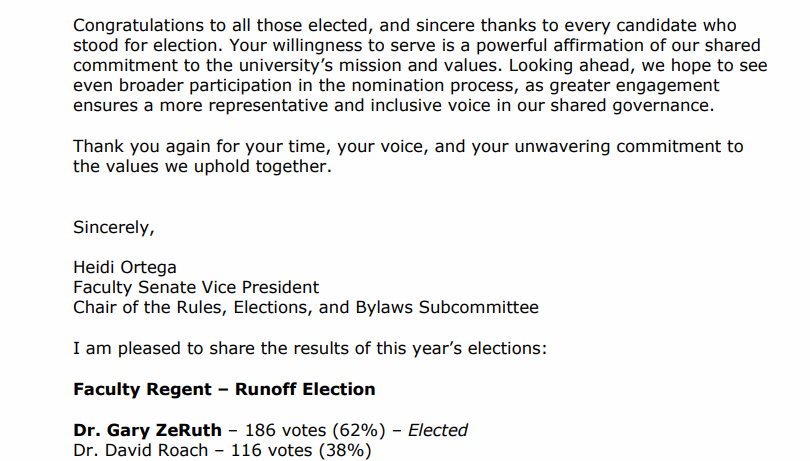
Murray State’s first-time freshmen numbers are expected to be record-breaking for the 2023-24 academic year, and the University is already feeling the effects.
Roslyn White, assistant vice president for enrollment management, said more than 1,600 freshmen were enrolled as of Aug. 22.
“There were many factors that contributed to the success of enrolling this possibly record class,” White said. “The recruitment of students is a campus wide effort and the university as a whole has contributed.”
She said some factors might be restructuring Academic Achievement Scholarships, and a new regional tuition rate.
“A more consistent and comprehensive communication plan with our admitted students and their families is a way the University has changed, resulting in more successful recruitment,” White said.
The admissions department has also been intentional about student outreach and a strong presence at college fairs and workshops.
“We have on-site admissions early [in September and October] within our 18- county service area and targeted schools throughout Kentucky, Illinois, Indiana, Missouri and Tennessee,” she said. “Our admissions office, along with recruitment staff, go[es] into the schools and ha[s] workshops to help students apply and complete their admission applications. Students are given an admission decision on the spot.”
White said the new regional tuition rate including 15 states, as well as a new test-optional admission method, are contributing to the high enrollment numbers.
“We regularly communicate with students through a plan which includes email,
regular mail, texting, telephone calls and digital marketing through social media,” she said.
On-campus outreach opportunities are another way Murray State connects with new students.
White said the University has two large Racer Days in the fall and one in the spring each year.
The University does not currently have data on how freshman enrollment compares to other universities but will once the final census numbers are submitted in October.
Renee Fister, associate provost who also works in Enrollment Management on data prediction needs, said teamwork through the various departments on campus played a large role in recruitment as well.
“The communication with families partnered with the communication with Enrollment Management, Academic Affairs, Student Financial Services, Auxiliaries and many more has created a synergy to aid the student to better address questions and to offer new opportunities as the enhanced Academic Achievement Scholarships and increase in regional tuition states, among many initiatives, through guidance and leadership of Dr. Jackson,” she said.
Many areas across campus such as housing, dining, parking services and academic affairs feel the effects of the high number of students.
Kylie Jo Rouse, a resident advisor in Hester College, said the high freshman numbers are negatively impacting campus housing.
“The record number of first time freshmen is still affecting us because there are only a few open beds on campus, so room changes are going to be really tight and some may be unable to get one at all,” she said.
Rouse said move-in day was much more chaotic than previous years, and elevator waits were 30 minutes at the busiest hours. She said many of the students’ RacerCards were not ready, which caused difficulties using meal plans during the wait time.
Rouse said she feels these high rates of first time freshmen are causing problems in an academic perspective as well.
“As a student, it was really hard to get registered in the classes I needed and the ones I did get in are full, making it more stressful on professors and students because curriculum has had to be adapted,” she said. “Teacher-student interaction has been reduced, and grading is going to take longer.”
Rouse said there are some benefits to the high number of freshmen, including higher revenue and affordable tuition, but she also said there were detrimental effects.
“I fear that with Murray admitting this many freshmen, it will become a yearly thing and we will grow to be too big,” she said. “I chose Murray because it wasn’t a huge SEC school with 30,000-plus students with long waits or large classes where you can’t interact with your teachers or peers.”
However, Fister said that “increasingly larger class sizes should not be a concern for students on the Murray State campus.”
Fister said the University class sizes remain consistent in previous years due to IPEDS, a data system which is used to assist educational institutions in acquiring statistics for their university.
“Those efforts are a testament to the Chairs and Deans with the leadership of the Provost,” she said.
Fister said this first time freshmen number has been tracked and planned for by creating enough space in the academic setting.
“Growing pains are always an issue, but they are good problems to have,” White said.



























































































